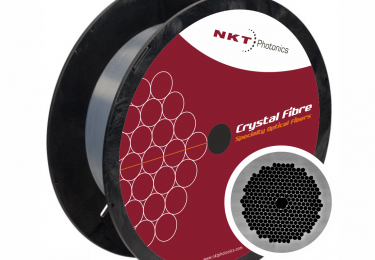As this design platform matures, it can benefit from further advancements in optical fiber design. In particular, hollow-core fibers that allow light signals to propagate mainly in air overcome many of the limitations of conventional silica core fibers.
For FOGs, our hollow-core fibers offer the following advantages:
Optimized packaging
- Reduced form factor enabled by small coiling diameter, 6x tighter than conventional fibers
- Low magnetic field sensitivity requires less shielding
- Index match to air enables low reflectance free-space coupling
Improved stability means less drift
- Low optical non-linearities
- 7x lower temperature sensitivity (Shupe effect)
- 50x lower radiation sensitivity
More information can be found in our white paper on hollow-core fibers for Fiber Optic Gyroscopes and in our section on hollow-core fiber products.
How others use hollow-core fibers in FOGs
- S. Yin, J. H. Kim, P. B. Ruffin, C. Luo “An Investigation on Fiber Optic Gyroscopes Using Microstructured Fibers” in Photorefractive Fiber and Crystal Devices: Materials, Optical Properties, and Applications XII. Proceedings of the SPIE, Volume 6314, pp. 63141H (2006).
- G. A. Sanders, L. K. Strandjord, and T. Qiu “Hollow Core Fiber Optic Ring Resonator for Rotation Sensing” in Optical Fiber Sensors, OSA Technical Digest (Optical Society of America, 2006), paper ME6.
- M. J. F. Digonnet, H. K. Kim, S. Blin, V. Dangui, and G. S. Kino “Sensitivity and Stability of an Air-Core Fiber-Optic Gyroscope” in Optical Fiber Sensors, OSA Technical Digest (Optical Society of America, 2006), paper ME1.
- Hyang Kyun Kim, Michel J. F. Digonnet, and Gordon S. Kino “Air-Core Photonic-Bandgap Fiber-Optic Gyroscope” J. Lightwave Technol. 24, 3169- (2006)
- Stéphane Blin, Hyang Kyun Kim, Michel J. F. Digonnet, and Gordon S. Kino “Reduced Thermal Sensitivity of a Fiber-Optic Gyroscope Using an Air-Core Photonic-Bandgap Fiber” J. Lightwave Technol. 25, 861-865 (2007)



